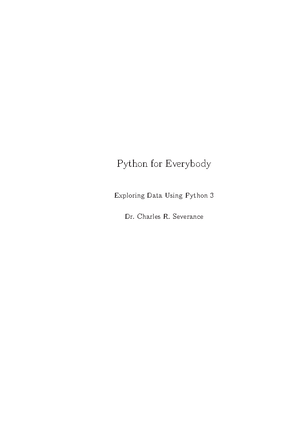- Information
- AI Chat
Was this document helpful?
Ijrpr 7319
Course: python programming (cs8151)
86 Documents
Students shared 86 documents in this course
University: Anna University
Was this document helpful?

International Journal of Research Publication and Reviews, Vol 3, no 10, pp 168-173, October 2022
International Journal of Research Publication and Reviews
Journal homepage: www.ijrpr.com ISSN 2582-7421
AI Virtual Mouse Using Hand Gesture Recognition.
Abhishek R. Shukla
Department of Information Technology, B.K. Birla College of Arts, Science & Commerce (Autonomous), Kalyan, 421301, Maharashtra, India.
abhishekshukla.as1@gmail.com
DOI: https://doi.org/10.55248/gengpi.2022.3.10.13
ABSTRACT:
The mouse is one of HCI's (Human Computer Interaction) incredible inventions. A wireless mouse or a Bluetooth mouse still uses devices because a battery is
needed for power and a dongle is needed to connect the mouse to the PC.Therefore, they are not totally device-free. The proposed AI virtual mouse system can
solve this problem by using a webcam or built-in camera to record hand motions and identify hand tips using computer vision. The system's algorithm makes use
of the machine learning algorithm. The computer can be controlled digitally and cando left-click, right-click, scrolling, and computer cursor functions based on
hand motions without the need for a physical mouse. Deep learning is the basis for the hand detection method. As a result, by eliminating human contact and the
requirement for external devices to operate the computer, the suggested strategy will stop the spread of COVID-19.
Keywords: virtual mouse, AI, MediaPipe, OpenCV.
1.Introduction
Because of advancements in Bluetooth and wireless technology, augmented reality, and other related sectors, the devices we use every day are
becoming smaller. In this study, a computer vision-based virtual mouse system that employs hand gestures and hand tip detection to replicate mouse
motions was developed. The main objective of the proposed system is to replace the traditional mouse with a web camera or a built-in camera in the
computer to perform computer mouse cursor and scroll tasks.The AI virtual mouse technology allows us to conduct mouse cursor actions like scrolling
and moving the pointer while also monitoring the fingertip of a hand gesture using a built-in camera or web camera.
In this study, the user uses a built-in camera or webcam together with hand gestures to operate a computer mouse, as opposed to using a wireless or
Bluetooth mouse, which needs a particular peripheral such as a mouse, a dongle to connect to the PC, and a battery to operate. The suggested system
uses a web camera to record, examine, and decipher the captured frames, identify various hand and hand-tip gestures, and then carry out the relevant
mouse action.
The Python programming language and the OpenCV package were used to construct the AI virtual mouse system. The suggested AI virtual mouse
system leverages the Media Pipe package for hand tracking and hand tricks. Additionally, the desktop window may be moved around and operations
like scrolling and left-and right-clicking are carried out using the Pynput, Autopy, and PyAutoGUI packages. The findings of the proposed model
demonstrate a very high degree of accuracy, and it can operate in real-world applications using CPU utilization rather than GPU.
1.1 Problem Description and Overview:
In the worldwhere there isn't enough room to use a physical mouse or for those who have hand difficulties and can't use a mouse, the proposed AI
virtual mouse system frequently wants to circumvent challenges. The COVID-19 condition also makes it risky to utilised gadgets by touching them
because doing so might result in an instance in which the virus is on them. Because hand gesture and hand unfolded detection are utilised to control the
laptop mouse operations by utilising a digital camera or tip intrinsic camera, the suggested AI virtual mouse may be used to resolve these concerns.
1.2 Objective:
I. The Hand Following Algorithm was used: - To recognise hand gestures and track hands on a laptop, the MediaPipe framework and therefore
the OpenCV package are both employed [7–10]. The application uses machine learning concepts to partially track and detect hand gestures
and hand tips.
II. The first goal of the planned AI virtual mouse system is to form a replacement for the traditional mouse system that can perform and
manage mouse functions. This will be finished the help of an internet camera that records hand gestures and hand tips so processes these
frames to hold out the mouse functions, like a left click, right click, or scrolling function.








